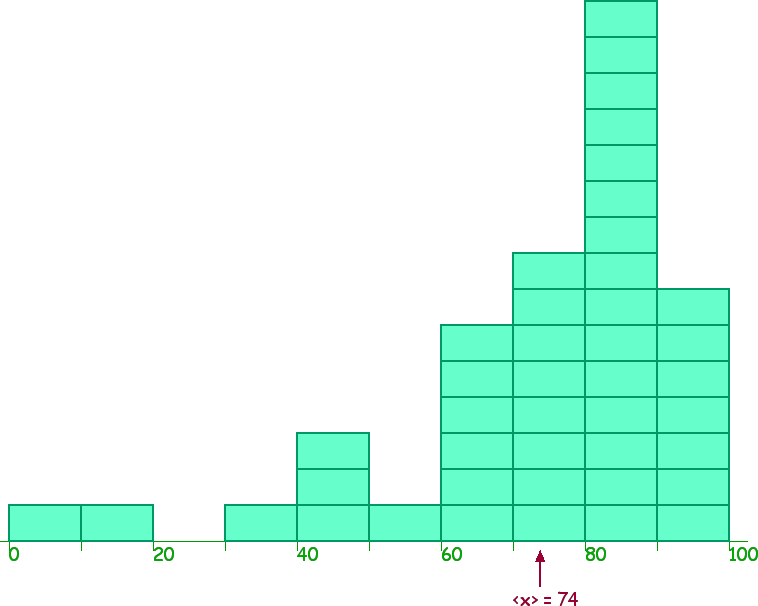
PHYsics 1161
Hour Exam #2
March 3, 2003

| Return to Calendar |
You may have one sheet of equations (one side of an ordinary 8.5 x 11 inch sheet
of paper).
As always, show your work. Please don’t leave me guessing or trying
to read your mind. My ESP skills are very poor!
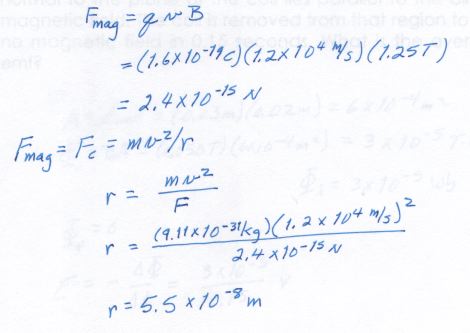
Alternatively, we could have solved it symbolically first, as here,
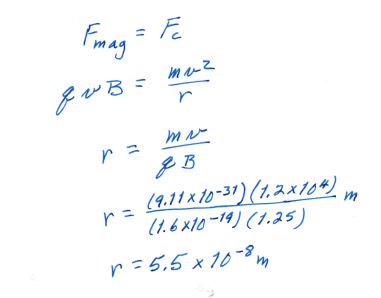
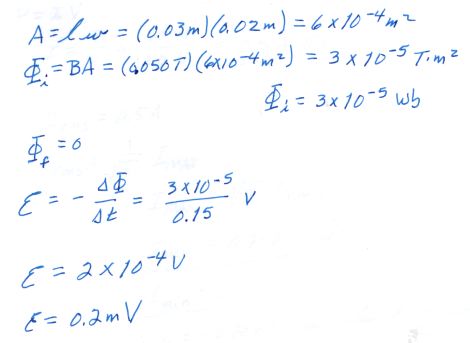
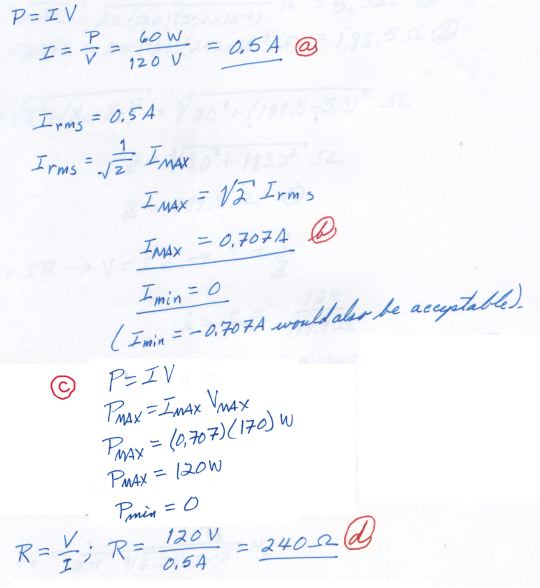
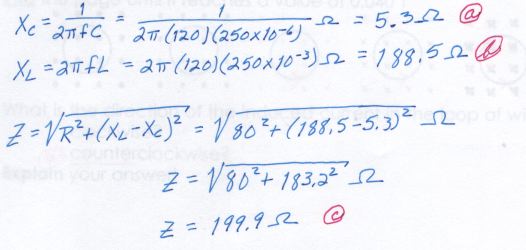
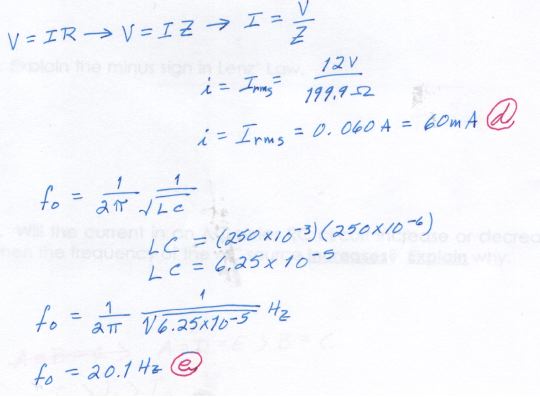

What is the direction of the induced current in the loop of wire?
clockwise?
counterclockwise?
Explain your answer!
We began with magnetic flux pointing out of the page and ended with flux pointing into the page. The induced magnetic field will try to restore the change in the flux -- or restore the flux to its initial condition. That means the induced magnetic field will point out of the page. The induced electric current that causes this induced magnetic field must be counterclockwise, according to the right hand rule.
ii. Explain the minus sign in Lenz’ Law.
The minus sign simply says the direction of the induced emf is such that the corresponding induced magnetic field will oppose the change in the magnetic flux.
iii. Will the current in an AC series RC circuit increase or decrease when the frequency of the AC source increases? Explain why.
The current through a capacitor in a DC circuit is zero. A DC circuit has a frequency of zero. As the frequency increases, some charge will accumulate on the capacitor and then the direction of the voltage and current will change, the charge will decrease, go to zero, and then charge of the opposite sign will accumulate. As the frequency increases, the current increases.
Mathematically, we can see this from
XC = 1/( 2 ![]() f C)
f C)
As f increases, XC decreases. XC, the “capacitave reactance” is much like a resistance. A decrease in XC means an increase in the current I.
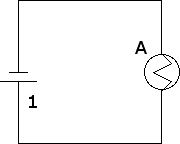
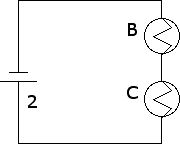
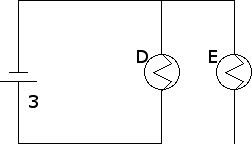
iv. Rank the five light bulbs in order of their brightness (or power). Some bulbs may be equally bright.
A = D =
E > B = C
The same voltage that is across A is also acros
D and E. So the brightness -- or the power or the current -- of all three of
these must be the same.
The voltage across B is the same as the voltage across C so the brighteness
of B and C must be the same. The voltage across both B and C in series
is the same as the voltage across A so the current through B and C will be less
than the current through A; the brightness of B or C will be less than the brightness
of B.
v. Rank the current through the three batteries.
This asks for the current through the batteries so it
is a question of 1, 2, 3 or I1, I2, and I3.
It is not a questions to be answered with A, B, C, D, and E.
Bulbs D and E have the same voltage across each or either of them as
the voltage across A. So they each have the same current as that through
bulb A. That means the current through battery 3 must be twice the current
through battery 1. That is,
I3 > I1
The equivalent resistance for battery 2 is twice
the resistance for battery 1 so the current supplied by battery 2 will be one
half that supplied by battery 1. That is,
I1 > I2
Putting these together, we have
I3 > I1 > I2
vi. Bonus Question
Citroen DS21 was a French automobile.
(Not much “Physics” in this one. It was meant only as a fun question
for students who were in class on Friday.